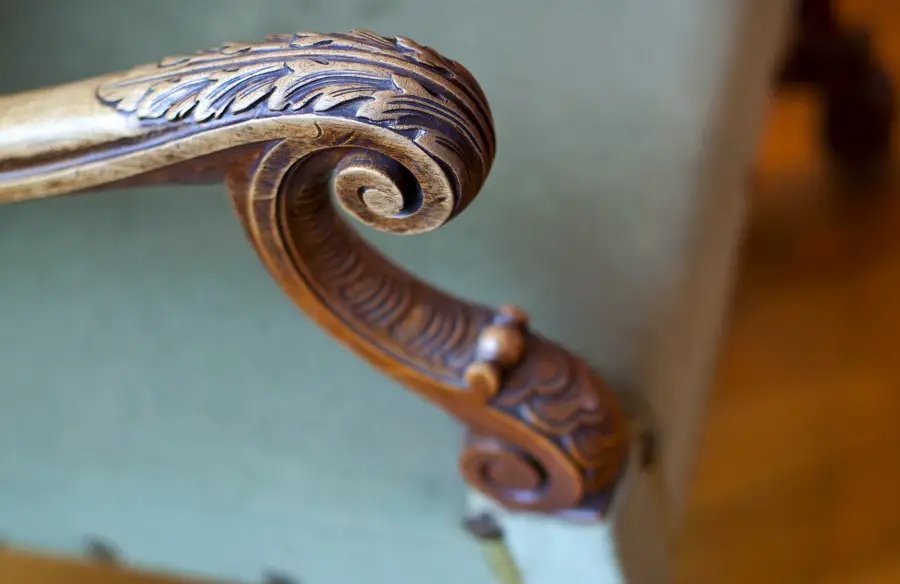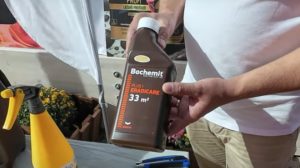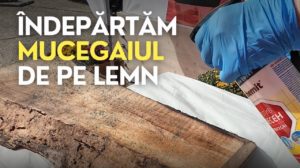"Maybe write an article about mixing different paints, varnishes and wood preservatives, possibly how they can be different. I've seen on multiple occasions people who have forgotten what they or the workers have been dealing with, then bought a different type of paint and applied it. Later they thought they could mix anything anyway." This is a message from one of our readers. It's true, we've touched on the subject incompatibility between layersBut it's also true that I very often see on profile websites wrong recommendations, which more confuse the person asking for advice than help. It is time for clearer and to the point explanations.

Restoration of wooden objects finished with natural materials
The materials with which the wood is covered have an aesthetic and protective role. Even if a very resistant hardwood is used, protection is necessary to protect it from water, stains or dirt accumulated over time. A wide variety of products are used for coating. In the past, only waxes, oils and shellac, With the development of the chemical industry, the range has greatly diversified. New varnishes and paints have become increasingly resistant, meeting the requirements of the areas where the finished object is used. We often want to refinish pieces of furniture that we have from our parents, grandparents, that we remember. Very old pieces are mostly coated with wax, oil, shellac or nitrocellulose varnish. These materials are less resistant and cannot be covered with any kind of varnish or paint.
What does and doesn't work as a finish over wax, oil, shellac or nitro lacquer
Ceara is the final layer over which nothing else can be applied. If you want to repaint a waxed object, the wax must first be removed. This also applies to wax that has built up over time from maintenance products.
Pis o oiled surface only oil or wax can be applied. Being old objects, we are talking about natural oils, not today's synthetic oils, which are a kind of modified varnishes. Oiled surfaces are usually poor in surface finish and often, because of age, the wood has a dry look on some areas. Natural oils are compatible with each other, so a wood finished with tung oilfor example, can be re-operated with linseed oil or with Danish Oil. Wax can also cover a waxed finish, helping to protect it.
Surfaces finished with shellac or nitrocellulose varnish behave similarly. Nitrocellulose varnish is one of the first synthetic varnishes to appear and, like shellac, is a resin dissolved in solvents. Both can be coated with either shellac or nitrocellulose varnish. Do not apply chemically cured, solvent-based lacquers over shellac or nitrocellulose lacquer. The solvent in the hardening varnish will soften the varnish layer underneath. Thanks to the catalyst, the top layer will harden, trapping the solvent inside. The solvent will continue to dissolve the original varnish, which will eventually come to the surface, breaking up the thin film above. The craftsmen call this phenomenon lake bloom.

How to identify the coating material with which the wood has been protected
In order to know what you are applying on top, you need to know what is already being applied by the piece of wood, both new and old pieces. Testing is done in as inconspicuous a place on the furniture as possible so that, if the test is more aggressive, the remaining mark will not be disturbing. It is best to start with less aggressive tests and continue gradually until all possibilities are eliminated. If it is an older piece, some prior documentation is welcome. The Internet gives us a lot of information and it is good to take advantage of this.
Ceara is soft and can be identified by its very low resistance to scratching (which can even be done with a fingernail) or abrasion. The edge of a coin is used to pull gently on the surface. If a yellowish-white or brownish crumbly substance collects at the base, the surface is wax. Another test is to put a drop of linseed oil or mineral oil on the surface and leave for a few minutes. If the oil is absorbed and the film softens to a misty film, it is wax. Wiping the spot with a soft cotton cloth will leave dissolved wax on the cloth.
Old oiled surfaces look shabby and dry. If droplets of linseed oil or mineral oil placed on the surface are absorbed, the surface is definitely oily. The oil drop test is also valid for surfaces that do not necessarily look dry.
To see if the surface has shellac, nitrocellulose varnish or oil-based paint we do a few successive tests. We put a cotton swab with a cotton swab end in ethyl alcohol and then place it on the wood surface. If it is shellac it will dissolve immediately, whereas nitro lacquer and oil paint will soak in as time passes and the spot will become sticky. Repeat the test, this time dipping the stick in acetone or nitrocellulose thinner. Now the nitro lacquer will be the one that will dissolve immediately, and the others will soften over time. Finally we put the chopstick in a soda solution. This will liquefy the oil-based paint, the others are unaffected.
The alcohol and acetone test can also be applied to finishing with polyurethane varnishother chemically hardened varnishes (added catalyst 50% and above) or UV-curable varnishes. The difference is that they will not be affected. In fact, such varnishes have very high resistance, some of them even withstand the light of a cigarette put out on their surface without leaving a mark. Another test that can be done on such very hard surfaces is to scratch them with a sharp, hard object (knife). If it scratches very hard, and when we manage to scratch it, however, a white, brittle powder is produced, it may be a polyurethane varnish.
Water-based lakes are not affected by alcohol or acetone. Those without hardener, which are less cross-linked, become opaque and sticky if rubbed with a cloth soaked in nitro or universal thinner. Catalyzed water-based varnishes are attracted to more aggressive solvents such as toluene or xylene. If the surface wiped with these solvents becomes gummy, you are dealing with a water-based varnish. Please note that toluene and xylene are considered dangerous solvents.
Possible combinations when finishing with synthetic lacquers
There is a huge variety of synthetic paints and varnishes, and if you ask a specialist from a company that sells professional products, you will get a lot of questions about your project before they recommend the right product. The products can be synthetic oils or waxes, water-based varnishes and paints, organic solvent or petroleum-based solvents, products based on different resins or a combination of them. Some of these materials can be applied on top of each other, others cannot. That's why you will always get the complete system, or at least recommendations on how you should use the product, if you call in a specialist firm.
Polyurethane varnishes cannot be applied over nitrocellulose varnishes and I explained why above. But nitrocellulose ones can be applied over polyurethane ones. The condition is that the surface must be sanded before application so that the coats have adhesion. Being very resistant, polyurethane varnish is not soaked by the thinner in the nitro varnish and the varnishes do not stick to it. As a rule, hardening varnishes can be applied one over the other provided the dry coat is sanded first.
Water-based lakes can be applied over most varnishes and paints except alkyd and oil-based. Before application it is mandatory sanding the coating to give it adhesion. Water-based varnishes have a very strong bond between the molecules so that if the varnish peels off in one spot, it doesn't break locally as with polyurethane varnishes, but peels off just like a sunburnt skin.
In the case of outdoor products, do not apply water-based varnish over alkyd varnish or water-based varnish over oil-based varnish. The reverse is not possible. Nothing more can be applied over the waxed impregnant or waxed laitance. For maximum resistance of exterior products, use the entire system recommended by the manufacturer (e.g. impregnating, primer, varnish).
You may sometimes, for various reasons, have misapplied materials and nothing happened. It does not mean that the rule is wrong but that you have been dealing with an exception. On the second application you may not have the same luck. It's good to follow the rules to minimize problems and achieve quality finishes.
I hope you find the above helpful. If you have finished wood and have had interesting experiences, I look forward to hearing about them. And if you have any questions or queries, leave them below in the dedicated space. I will be sure to reply.

































Add comment